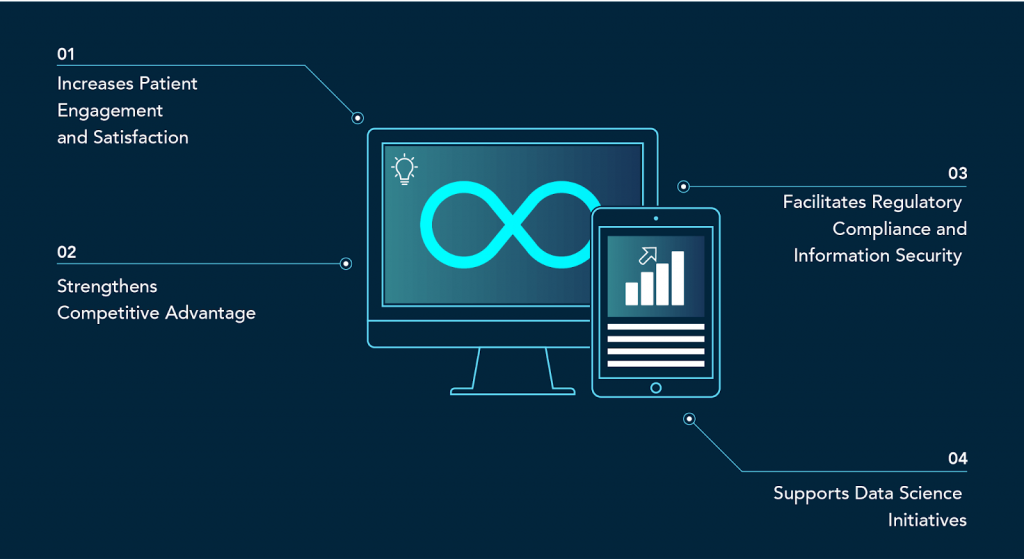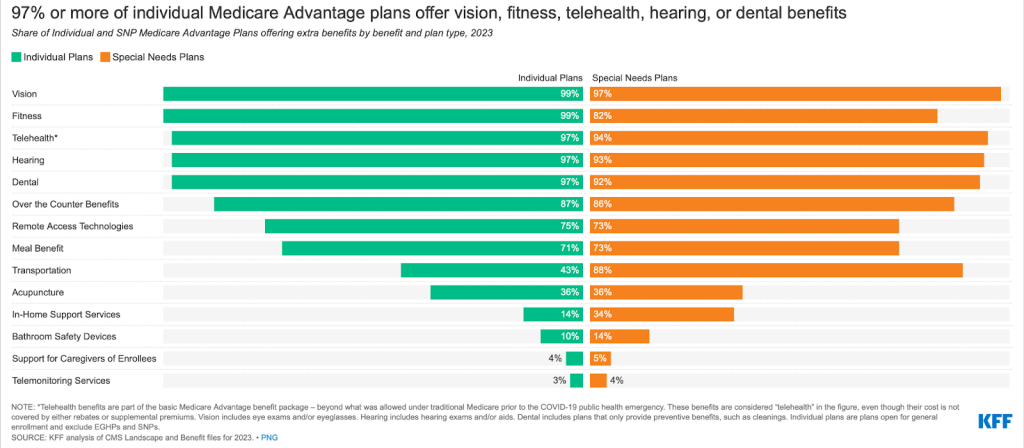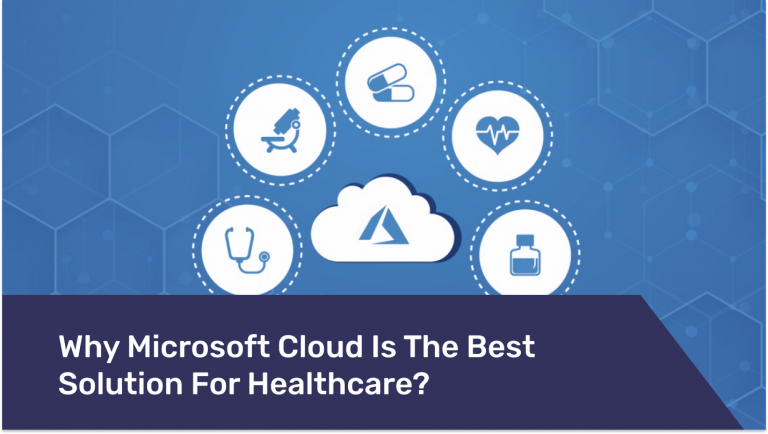The 2020 Pandemic made healthcare services digitized in a split second. A brand new reality drove companies toward a totally new set of advantages, challenges, and stumble stones with cloud-based data processing. As of the end of summer 2021, 73% of healthcare businesses had implemented DevOps practices. Yet, it was not easy to triumph with DevOps.
Gartner’s research showed the failure of 75% of DevOps projects through the previous year, 2022. The expectations were not met due to organizational issues and a lack of flexibility in the transitional process. Nevertheless, what the company gets from implementing DevOps tips the scales and dominates all the potential challenges. With a proper organizational shift, DevOps Backend Development makes better both healthcare workflows and consumers’ experience/satisfaction.
Thanks to DevOps in healthcare, medical and private data becomes easily accessible while being well protected. The whole industry reaches a new competitive level via flexible, patient-centered, data-driven, and excellent caregiving.
How DevOps Is Different From Traditional IT?
By introducing DevOps in your company, you move from rigid processes of Traditional healthcare IT solutions like developing, testing, delivery, and maintenance, to more advanced workflows where the attention and effort brilliantly go on the value of each step diminishing the risks.
While traditional healthcare software companies are mostly about big project releases and solid investments, DevOps in healthcare focuses on small steps, little releases, and lowering risks for slow and steady growth.
Data-sharing within traditional IT is somewhat clumsy and awkward. Plenty of management approvals, long time-consuming reports, etc. Things are different in the case of DevOps. The data-sharing team is in charge of making everything fast and relevant.
DevOps In Healthcare. The Main Advantages
Thanks to the DevOps approach, healthcare companies adapt and shape up to renovations and updates faster. The teams can now deliver quickly making the setups steadier and smoother. Communication challenges may take place there. DevOps handles a streamlined flow between the teams and makes the software development process successful.

After adopting DevOps, the healthcare business gets the following advantages:
- Compliance And Security
DevOps’ key standard – infrastructure as code – makes it possible for healthcare providers to include a secure base to the application essence.
These tactics are called DevSecOps when a vulnerability check takes place together with pipeline practices. This way, engineers can take care of all probable vulnerabilities at the time of development and launch. What is more, the rule of “least privilege” is used to determine access. Users with the lowest privilege rate cannot access key areas of the system.
- Easier Data Management
Building digital products that are cost-efficient, intuitive, and quick to react is possible with data-based methods. There is nothing better than data-driven tools for improving capacity and effectiveness. This is an open road to your business competitiveness due to many precious insights even if there is a huge amount of patient data that is impossible to be processed for that goal.
DevOps healthcare system of tools helps to handle that data the best way so that providers are able to manage big data like pharmacies, laboratory testing records, medical devices and wearables info, Electronic Health Records, as well as insurance claims providing perfect accuracy and data safety.
- Automation
DevOps workflows enable healthcare organizations to create better applications by adding automation to their already existing systems. As a result, SLAs are satisfied and hospital resources are managed effectively. Moreover, consistent, graded, and regulated processes ensure smooth and steady deployment, and features are delivered right away.
- Data Science Support
DevOps style is extremely helpful in supporting data scientists by making certain that patients’ data is always relevant and accurate for analysis and research. And we talk about various toolkits, languages, and frameworks here, the processing and deep learning of which is only possible with reliable infrastructure, and special hardware.
DevOps are especially beneficial in the case of data science initiatives that directly affect patients like medical image diagnosis, and more.
- Engagement improved
Using Continuous Integration and Continuous Delivery is greatly beneficial for any healthcare business as they boost patient satisfaction. They mean the ability to offer cooler features and services like electronic prescription filling or self-check-in systems, etc. The first one allows patients that are not at the premises to get their medication while the other makes patient processing way faster. It means convenient and effective healthcare as well as operational efficiency.
DevOps for healthcare. The Model Life Cycle

The DevOps culture is implemented in several phases with the help of several tools. They are the following:
Continuous Planning
Naturally, the initial phase is to plan. The development team puts down a plan being aware of the application objectives that must be provided to the user. Budget implications and human resources are also studied during this stage.
Coding, Repository, Version Control
Once the plan is made, the coding begins. The development team works on the same code, and different versions of the code are stored in a repository. With the help of tools like get and merge when required. This process is called version control. It is the key aspect for developers to ensure coordination and control.
Automated Build. The code is then executable with tools like Maven and Gradle in the Build stage.
Test
After the code is successfully built, it is then tested for any bugs or errors. The most popular frameworks for automation testing are Gemini, Selenium, Travis CI, etc.
Set up
Once the code has passed several manual and automated tests, it is ready for deployment and sent to the operations team.
Operate
The operations team now deploys the code to the working environment. The most prominent tools used to automate these phases are Ansible, Docker, and Kubernetes.
Constant Feedback and Monitoring. After the deployment, the product is constantly monitored. With attention to every tiny detail and at a regular pace. This is the way to sustainability. Nagios is one of the top tools used to automate this phase.
Integrate
The feedback received after monitoring is sent back to the planning phase. And this is what forms the core of a DevOps life cycle. The Integration phase is mostly done via Jenkins. If the code passes the test, it is sent for deployment, and this is referred to as Continuous Integration. The software is provided with regular updates automatically and steadily.
Transition To DevOps And Its Nuances
There are several aspects to keep in mind for healthcare infrastructure managers for effective adoption of DevOps practices. In general, it is most challenging in huge companies with millions of members. Human-related points are usually the most problematic – not hi-tech. There is a lot of struggle to convince the need for organizational change and its value for future success. Organizational learning is crucial to make it possible for DevOps to succeed and bear fruit.
DevOps practices should be based on customer value.
The problem of companies that launch DevOps often lies in launching DevOps initiatives with poor or inadequate vision of business results. Administrative managers and company leaders must ensure the staff training and customers get the knowledge of the DevOps concept, and its value and only then introduce the new practice. Every step has to make business sense, and nothing is possible unless there is a refined vision of the end result.
Proper management of the organizational change
The team culture is one of the key human factors that affect a company’s ability to adjust to DevOps. Yet, healthcare institutions often focus too little on getting their employees on board with the upcoming transformation and instead drive most efforts on DevOps tools and tech. The truth is, tools are not able to fix a cultural problem. Therefore, developing the right attitude for adopting DevOps practices is the main task here where candidates show respect to the basic values of the in-house workflow, are reliable and constant learning is their professional standard.
Effective collaboration
Strong and rewarding DevOps efforts are only possible in partnership with all stakeholders. Very often, unfortunately, DevOps matters are narrowed to administrative authorities. This lack of coordination between teams and departments can lead every good initiative to its failure. That is why barriers should be broken down in favor of a friendly supportive atmosphere.
No hurry!
It is necessary to understand that a big-bang approach won’t work here. Single-step launching of DevOps practices means unnecessary risk and is usually just a waste of time and effort. DevOps means iterations and adjustments, especially when we talk about huge healthcare enterprises. A phased approach is a way to go here with its space for lifelong improvements and changes if needed. It is also required that all teams are collaborating as a friendly community sharing the same big purpose.
Relevant expectations of DevOps
Just like with trying hard to fit DevOps efforts into customer value, there is an imbalance in many companies between unrealistic expectations for DevOps and the final result. Marketing and management are steadily repeated affairs.
What may help here is coming to terms with goals and resources, numbers, and data. Defining, expecting, and satisfying value in an endless way.
Why Outsourced Specialists Are Better Than An In-house Employee Or A Freelancer?
If you are a healthcare business owner who feels overwhelmed with everything that needs to be done, think about outsourcing.
- The main reason why companies outsource is substantial budget saving while keeping the same high quality of jobs. Especially when we look at the Eastern Europe countries like Ukraine.
- There is no need to hire and train an employee, and instead of insurance and vacations, you can pay them benefits instead.
- Hiring professionals with the skills needed exactly for your project increases focus, efficiency, and time-to-market. Moreover, your secondary and tertiary tasks can be given to a contractor, so you can pay your utmost attention to your core business.
- Outsourcing style of partnership frees up resources. Any job that takes away from core tasks hurts your business. You can handle smaller tasks for a contractor instead.
- This way you gain capabilities. You literary can hire anyone on the globe and get access to a wealth of talent.
Being aware of the potential risks saves you.
- It can make your in-house team uneasy about their position if you hire contractors that perform similar jobs.
- If not vetted properly, outsourcing can sometimes get poor second-rate work.
- You may find difficulties with time zones and language barriers. Yet, this is not the case with Ukrainian developers, they usually have no problems with English-free communication and the time zone is perfect for being in touch with their clients either in Western Europe or The USA.
When searching for an outsourcing company, you should know exactly the type of work you want to entrust to a contractor. Ask for recommendations or if you are using a job posting website, study the reviews. When meeting for the interview, before signing a contract, make sure you both have a clear understanding of the work scope and deadlines. Check if your candidates have proper communication and management skills by proposing to solve a small task. Pay attention to how quickly they respond and how they plan for meetings.
It is worth noting that mentioning intellectual property and company data protection in the contract is a great thing.
Outsourcing is a wonderful way to be more productive and efficient without adding stress to your main workflow. In the picture below you can compare the in-house, outsourcing, and freelance styles of collaboration.

It is obvious and understandable that budget savings are more substantial in the case of outsourcing and freelancing. Yet, in the case of freelancing, it wins only in the cost-saving and quick start. The in-house team, on the contrary, is losing in these two factors. Outsourcing specialists win here covering all the key aspects that are important: reasonable costs, focus on your project, scaling option, risk-free approach, quality of service, and motivation. Convincing, right? To find out more about hiring outsourced developers, read our post here.
The Example Of Implementation: How Kaiser Permanente Successfully Adopted DevOps
Let’s see How DevOps is Enabling Business Transformation in Health Care on the example of Kaiser Permanente, one of the American largest healthcare corporations, founded in 1945. The answer Why did they start DevOps comes out from the following. In 2015, before moving to DevOps practice, the company’s reality was like this:
- 4 releases per year on digital channels
- 10-day release process
- Low predictability of scope
- Manual, error-prone (“snowflake processes”, no standardization)
- Inefficiency (breakpoints, long reviews, handoffs, wait times along the way, etc)
- Large batch (risky, manual built/deploy)
In order to improve and grow, the company took a consumer digital strategy to engage with its 12 million members in a brand new way, and their journey of getting better-included value stream mapping, CIO-level investment, and DevOps. Since 2016 the focus was totally on predictable releases that enabled fast time-to-market features.
It was very eye-opening. Although the waste and inefficiency were quite obvious before, the new practice specifically pointed out where the company needed to concentrate.
The company actually closed off and isolated the DevOps team that was going to build the new practice. This little separation from daily goings-on made it possible for the new employees to start from a clean sheet of paper. Clever and bright people in a separate room pulling together best practices and trying to understand how to could build this to make it work in a highly regulated healthcare environment. But also press on the status quo in the norms.
The company activated the new practice when it was 80% done because they knew there would be iterations needed during the accommodation processes. There were two good teams who were assigned to be early adopters, and it helped to mature the new practice greatly.
In two years KP had 30 squads in the practice. 30 teams started to leverage the practice with the prospect to spread this to the rest of their IT.
Apart from innovation and experimentation, DevOps practice brought a lot of change modernizing the enterprise and engineering practices. The results were substantial and impressive:
- Automation-first mindset,
- Moving to Cloud, making sure they are following microservices patterns,
- Breaking traditional habits like fixing forward,
- Developer self-service,
- Pipelines and processes “prove” readiness,
- Site reliability engineering.
It also involved a cultural transformation. There were absolutely new mindsets as well as new ways of behaving. The things like design thinking, empathy, and co-creating with business partners were adopted. The collective approach where DevOps is an important part, was actually what made the difference.
In two years, after having developed DevOps practices, the digital engagement with KP’s members looked like this:
- 300 million visits to kp.org per year, 66% of which are via mobile devices;
- 6,5 million members registered on digital channels;
- 51 million lab tests viewed;
- 82% of member visits related to managing care;
- 28 million prescriptions filled;
- 170 thousand video visits.
These statistics were direct proof that member-facing digital assets are key to care delivery.
As for 2023, the company’s services have evolved to this:

As health care develops and matures to a more consumer-centric standard, IT developers in these companies are looking for advanced new ways to manage to support the optimal agility and speed of their business partners. DevOps practice helped Kaizer Permanente to meet these needs, making a valuable contribution to immense internal and external changes and improvements with their members’ examples.

We Can Help You With DevOps For Healthcare
Today more and more companies lean toward automation with the aim of reducing their delivery time and the gap between their development and operations teams. To attain all of these, there is just one gateway – DevOps.
DevOps For Healthcare make it possible to focus on engaging people in their total health by providing end-to-end digital practices that are convenient, seamless, and customized.
If you are looking forward to doing the same thing, our ZenBit healthcare developers are here for you! Check out our portfolio or contact us today! Take care!






